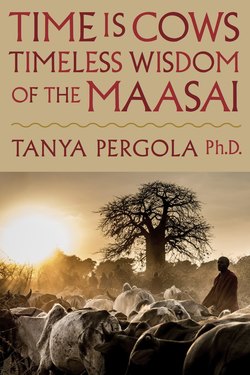Читать книгу Time is Cows: Timeless Wisdom of the Maasai - Tanya Pergola Ph.D. - Страница 8
На сайте Литреса книга снята с продажи.
INTRODUCTION TO MAASAI COMMUNITY
ОглавлениеThe game drives in the renowned wildlife parks in Tanzania’s Northern Circuit ignited my mind with thoughts about environmental conservation in ways that were very different from how I had considered the subject in graduate school. Wanting my eyes to be as open as possible to new understandings, I had asked my guides to bring me into the villages, to meet the people who lived in and around the parks. At first they refused, telling me that mzungus, white visitors, should not go to the villages because there was too much poverty in them. But I insisted that I wanted to truly see how the Tanzanian people lived—how the majority of the people on this planet live—and eventually they consented and took me to the villages.
I learned about community and wildlife conflicts and the ways in which international organizations were working to distribute more of the revenue earned from photographic and hunting safaris to the local people. I learned of the deforestation of indigenous forests as people cut down more and more trees for fuel and to make charcoal. I learned that the government of Tanzania was unable to bring electricity in any form to the rural and even semi-rural areas of the country, where eighty percent of its citizens live.
So many of the theories I had been teaching in my Environmental Sociology classes back home were sorely tested in real time in East Africa, and I couldn’t help but be moved by the disparities between what I “knew” and what I now saw. Surely there was a way I could help, I believed—some way in which I could really get in there and support Tanzanian development, yet maintain its incredible natural beauty. “Sustainable development” was the term of the moment in my professional circles, and I was certainly passionate about getting involved in the thick of it. But even with Sululu’s help, I wondered if I could find my way in with respect, understanding, and compassion.
The answer, it turned out, was finding a way to connect with people on a spiritual level. During one of our game drives, my guide asked me what my religious denomination was. It seemed to be a common question among people in that region, heavily influenced by the work of Christian and Islamic missionaries. At first I chose not to answer, thinking the question was too personal to ask of a “stranger.” But it wasn’t inappropriate at all from his point of view. He persisted, and eventually I told him a few things about my background and beliefs.
In that case, he said, “You should visit my people, the Maasai. You will be like a sister to them,” assuring me that they and I shared similar beliefs about a universal God or creator who can most easily be experienced in nature. Like virtually all indigenous peoples, the Maasai had a strong belief in the power of nature and its connection to the human spirit, he said.
According to Maasai oral history, their people originated from the area of Egypt, along the Nile River and migrated south through Sudan, Ethiopia, and Somalia around the fifteenth century, ultimately moving into Kenya and Tanzania between the seventeenth and late eighteenth centuries. It has always been challenging for the Maasai to maintain their traditional semi-nomadic pastoral lifestyle, no matter where they have traveled.
During my first visit to a Maasai homestead, I talked with the people I met about health care, culture, medicine, and the natural environment, and I came away amazed. How could these people have such wisdom, without any formal education? I was overwhelmed, and I knew I clearly had something to learn from this community. In contrast to all the dancing around the edges of “what is wellness?” in America, the work I was doing with the alternative medicine boom, and in environmental conservation, I actually felt I was getting close to some answers here in the remote villages of East Africa. I wanted to learn more, and perhaps become a teacher and a student at the same time.
I was given a name, Namelok, meaning “Sweetie,” a woman with a sweet heart. Unlike many of the previous researchers and international development workers who had come to their villages and asked many questions, I just sat and listened. And apparently the Maasai appreciated the difference. “When people asked you who you are,” Sululu explained to me, “you spoke slowly, and from the heart. They believed you were very interested in them, open to hearing everything they said, not for any specific target. That is why they love you.”
